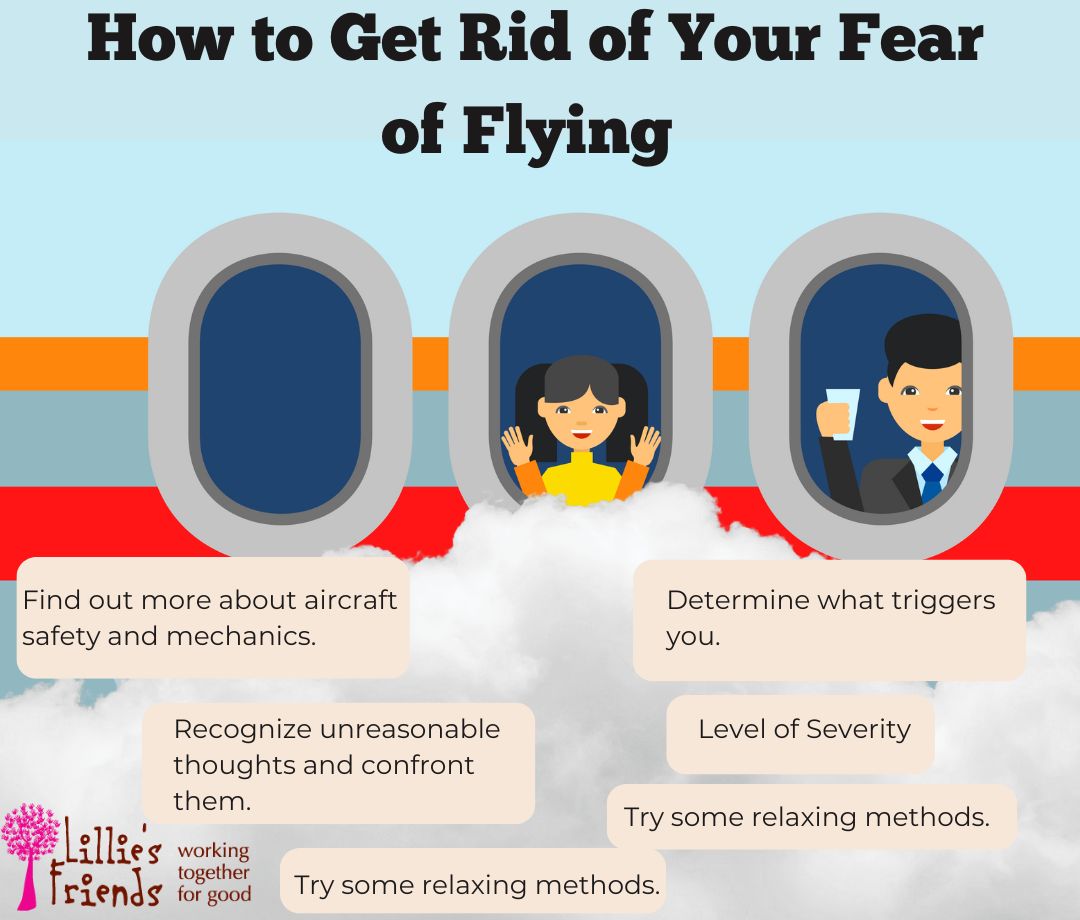When flying, many individuals complain about feeling anxious and uneasy. An estimated 16.9% of Americans↗ are thought to be afraid of flying, according to a 1982 research. Aerophobia, also known as aviophobia, is a frequent diagnosis for the fear of flying. It might happen as a result of the packed area, the enhanced takeoff sensation, or anxiety about turbulence, all of which could produce panic. This article will outline the primary signs of aviation anxiety as well as several strategies for overcoming it.
How Can I Tell the Difference Between General Anxiety and Aerophobia?
When the plane begins to move, the majority of people with aerophobia frequently worry about their safety. They know flying is safe, but the dread is still too great.
The patient could occasionally experience moderate anxiety prior to or during the journey. Others experience severe symptoms, such as incapacitating panic episodes.
The following are typical signs of aerophobia:
- Hands that are cold
- queasy
- Shivering
- A higher heart rate
- The sensation of coughing
- Breathing difficulties
What Makes People Fear Flying?
A person may develop a fear of flying for several reasons. One direct trigger, such as experiencing a traumatic flying event, or a confluence of many variables, might be the cause.
Feeling out of control is another major trigger for flight anxiety. Aerophobia is further influenced by the fact that most people recognize that not everything is within their control when they are five miles above the earth. Additionally, the cramped cabin may make you feel claustrophobic and frightened.
Other potential reasons are as follows:
- Childhood is when the dread of airplanes first emerged.
- A family history of aviation anxiety.
- Personal factors unrelated to traveling, such as dissatisfaction with airport protocols or concern about the spread of sickness among airline passengers.

Five Strategies to Get Rid of Your Fear of Flying
The majority of individuals may not be aware that aerophobia is a mental health illness that may be treated. There are two approaches to overcoming flight anxiety: self-help tactics or flight anxiety therapy with a mental health professional’s assistance. Here are some self-help strategies to assist you in dealing with your aerophobic inclinations.
Learn for Yourself
Flight concerns are greatly exacerbated by the mystery of flying and a lack of technical understanding of it. To reduce flying anxiety, it would be beneficial to understand the safety precautions and mechanics of plane turbulence. From YouTube videos to online forums for those who are afraid of flying, there is a wealth of free content available online that may help anybody learn more about aviation.
Identify Triggers
Identifying the triggers for aerophobia is another useful strategy to help manage it. To learn what causes the fear reactions, try studying the surroundings and mental processes during the height of flight anxiety. Sights, feelings, emotions, or certain ideas are examples of potential triggers.
Change Your Negative Thoughts to Positive Thoughts
The development of a phobia can also be facilitated by overflowing the mind with unpleasant ideas. Focus on the thrilling aspects of the flight rather than worrying about all the things that may go wrong. Additionally, learn how to recognize illogical thoughts and effectively change your focus. If you believe, for instance, that “We are definitely going to crash,” begin by contrasting your beliefs with reality. “Do all the planes crash?” ask yourself. Does this aircraft appear to be damaged? This insight will assist you in lessening the impact of overgeneralizing, a cognitive error.
Next, identify the elements that might contribute to a good outlook on flying. For example, kindly review the location of the emergency exits and take a moment to read through the safety instructions once more. You will become more conscious of all the measures taken to guarantee your safety in the event of a perilous situation. Additionally, you may discuss your worries with flight attendants, who are prepared to manage various emergency scenarios and offer assistance to travelers experiencing flight anxiety.
Try some relaxation methods.
Being able to maintain composure also makes it easier to deal with aerophobia. To alleviate the symptoms, you might attempt gradual muscular relaxation, breathing exercises, or visualizations. It would also be beneficial to know that the more you practice, the more successful your plane-boarding tactics would be.
Look for Diversion
Carrying a diversion when traveling is an additional way to lessen anxiety. A peaceful soundtrack, a comforting film, or an engaging book can all serve as relaxing and distracting components.
Options for Aerophobia Treatment
Medication or other forms of therapy are the available treatment options↗ for fear of flying.
Drugs
Psychiatrists frequently advise individuals with aerophobia to take anxiety medications on a regular basis or whenever the triggers happen. Depending on their symptoms, a patient may be administered benzodiazepines to treat panic attacks, beta-blockers to prevent cardiac problems brought on by extreme anxiety symptoms, antidepressants to keep their mood stable, or sedatives to help them relax.
Therapy by Exposure
Exposure treatment will help anyone with aerophobia. It entails regulated exposure to flying and is one of the finest methods for overcoming a phobia of flying. Virtual reality, visualization techniques, or flight simulators can all be used to create the experience.
Therapy Using Cognitive Behavior
Cognitive-behavioral therapy is another popular technique for treating phobias. It entails the therapist using dialogue to help patients comprehend their negative thinking patterns. They also assist people in better understanding what causes their flight anxiety and in creating new coping strategies.
Desensitization in Systematic Form
The fear of aircraft can be treated with systematic desensitization↗ based on the principles of classical conditioning. By using counterconditioning techniques, the strategy seeks to substitute relaxation responses for fear responses.
Teaching the patient calm and breathing exercises is the first step. They are gradually made aware of their struggle against anxiety by the doctor. The patients keep using relaxation methods until they feel comfortable while the intensity of the exposure rises.
Group Counseling
Reviewing group therapy for minor aerophobia will be beneficial if there are no underlying medical or mental health conditions. Patients can meet pilots and other staff members of well-known airlines during the lesson, and they can learn more about airplanes and their safety features. It also gives you a chance to talk to other people who are afraid of flying and are working to overcome their anxiety.
Important Takeaway
One of the quickest and safest modes of transportation is flying. Planning flights shouldn’t be hindered by a phobia of airplanes because there are several ways to handle the stress and triggers. Medication and therapy are sufficient to manage this seemingly uncontrolled emotion.











